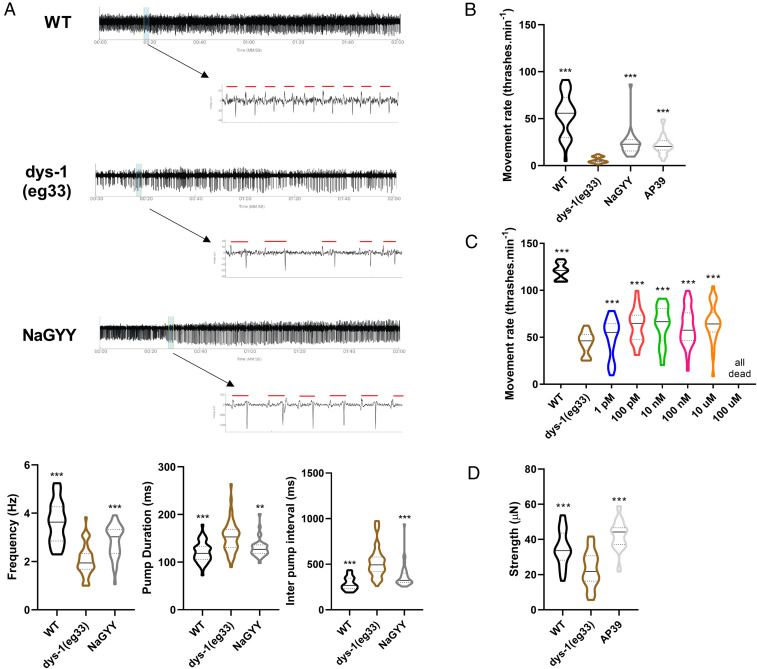Fig. 5.
The physiological improvements from H2S supplementation were largely mitochondria-based. (A) EPG traces show a decline in pump frequency, an increase in pump duration, and an increase in the inter pump interval in dys-1(eg33) animals. NaGYY (100 µM)-treated animals showed a partial improvement in these parameters. For all strains and conditions, n = 15 with two independent biological repeats, equating to 30 data points per bar. Results were analyzed by one-way ANOVA. All significance points are compared to dys-1(eg33). **P < 0.01; ***P < 0.001. (B) dys-1(eg33) animals were hypersensitive to antimycin A. NaGYY (100 µM) and the mitochondria-targeted H2S AP39 (100 pM) ameliorated this hypersensitivity. (C) Dose–response curve of the thrash rate of dys-1(eg33) at different AP39 concentrations. (D) As with NaGYY (100 µM), AP39 (100 pM) treatment improved movement and strength of dys-1(eg33)-treated animals. For movement assay, all strains and conditions are n = 10 with five replicates and three biological independent repeats, equating to 150 points per bar. Results were analyzed with a two-way ANOVA. All significance points are compared to dys-1(eg33). ***P < 0.001. For strength, n = 21 to 33. Results were analyzed with a one-way ANOVA. All significance points are compared to dys-1(eg33). ***P < 0.0001. Results are presented as a violin plot to show the frequency distribution of the data; the solid line represents the median, and the quartiles are represented by the dotted lines.

